Production Process
The production process of makeup brushes is a highly complex and intricate task that places great emphasis on craftsmanship. With advancements in technology and improvements in manufacturing processes, we have developed various machines to assist workers, thereby enhancing production efficiency. However, over 80% of the processes still require manual work, which heavily relies on the experience and skill of the brush makers. A perfect makeup brush is judged not only by its shape, material, and feel but also by the quality of its craftsmanship. Therefore, choosing a supplier with extensive production experience is crucial.
Let's delve into the general production process of makeup brushes. We believe our real-life photos will provide you with a preliminary understanding of the manufacturing techniques.
Production Process
The production process of makeup brushes is a highly complex and intricate task that places great emphasis on craftsmanship. With advancements in technology and improvements in manufacturing processes, we have developed various machines to assist workers, thereby enhancing production efficiency. However, over 80% of the processes still require manual work, which heavily relies on the experience and skill of the brush makers. A perfect makeup brush is judged not only by its shape, material, and feel but also by the quality of its craftsmanship. Therefore, choosing a supplier with extensive production experience is crucial.
Let's delve into the general production process of makeup brushes. We believe our real-life photos will provide you with a preliminary understanding of the manufacturing techniques.
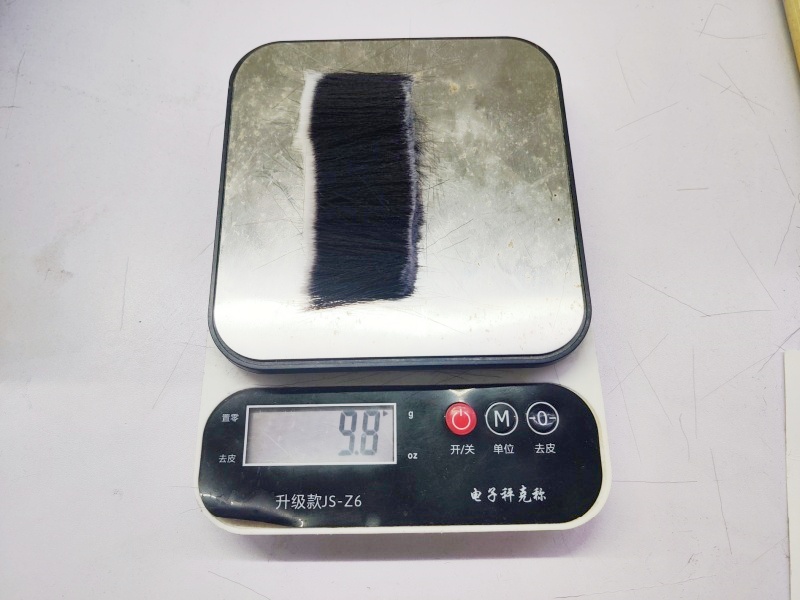
1. Weighing the Hair
Weighing the bristles ensures that each brush has a more uniform, even, and full shape. Since makeup brushes are made entirely by hand, this process helps reduce errors.
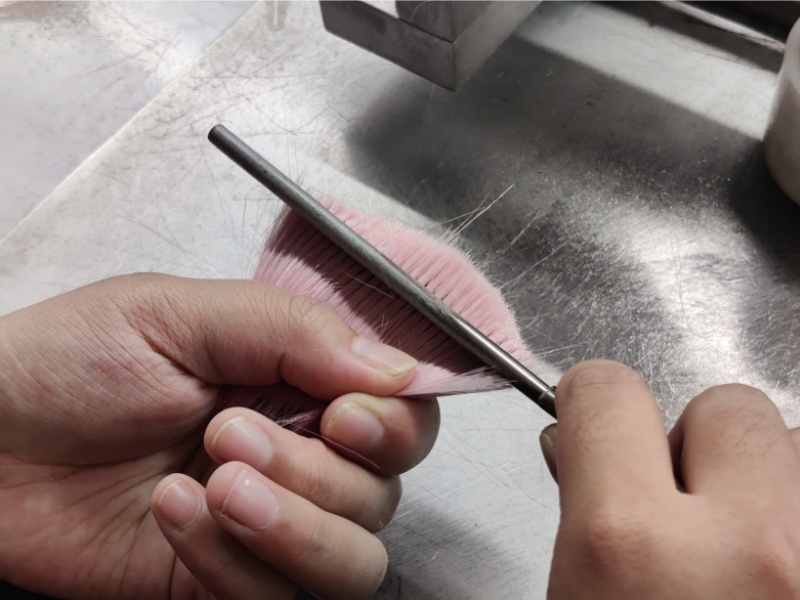
2. Combing the Bristles
Using a specially designed comb to detangle the bristles (similar to combing hair) makes the brush hairs smoother and better prepared for shaping in subsequent steps.
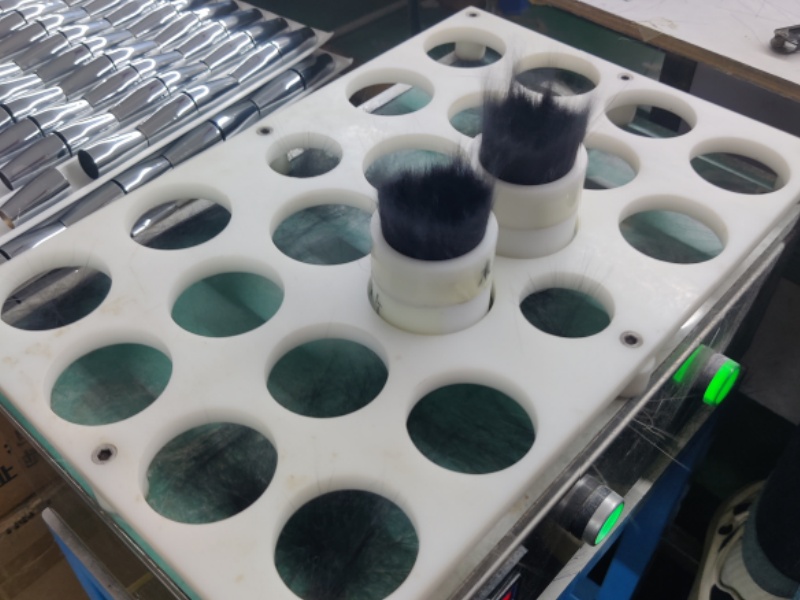
3. Bristle Shaping
Traditionally, the bristles are placed into a specially designed cup (different cups are chosen based on the desired brush shape), and the cup is repeatedly shaken on the table to shape the bristles within the mold. Nowadays, we have developed an automatic shaping machine. The cups are placed on the machine, which produces vibrations to shake the cups, ensuring the bristles inside are more evenly distributed. Compared to traditional methods, this significantly improves production efficiency and reduces the workload of the craftsmen.
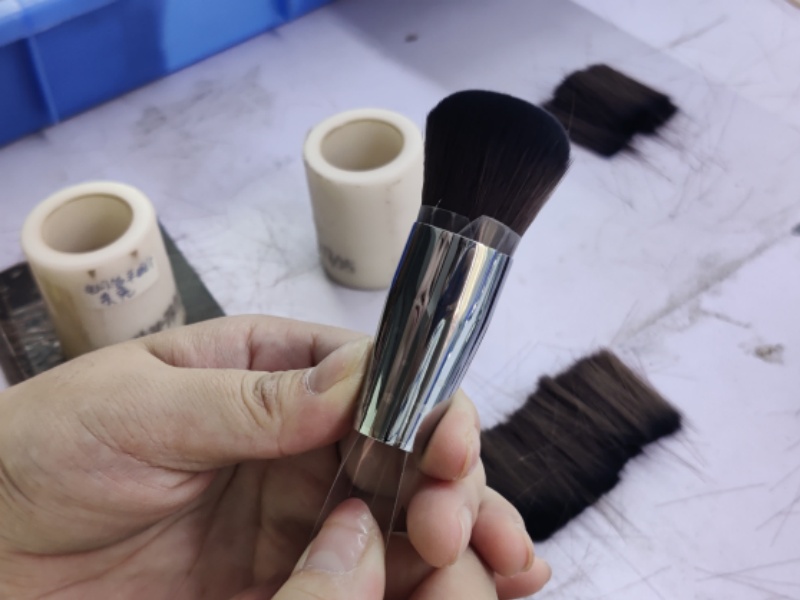
4. Place the bristles into the ferrule
Wrap the shaped bristles with flexible plastic paper and gently push them into the ferrule. At this point, 50% of the makeup brush head production is complete.
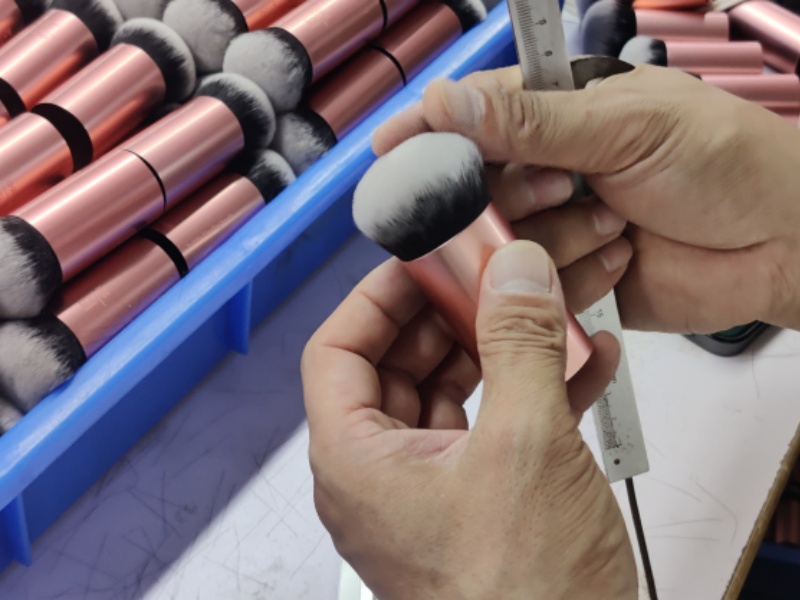
5. Trim the Shape
Not every shaped makeup brush head is perfect. At this stage, experienced craftsmen perform minor adjustments to correct any shape deviations, ensuring the brush heads match the design specifications.
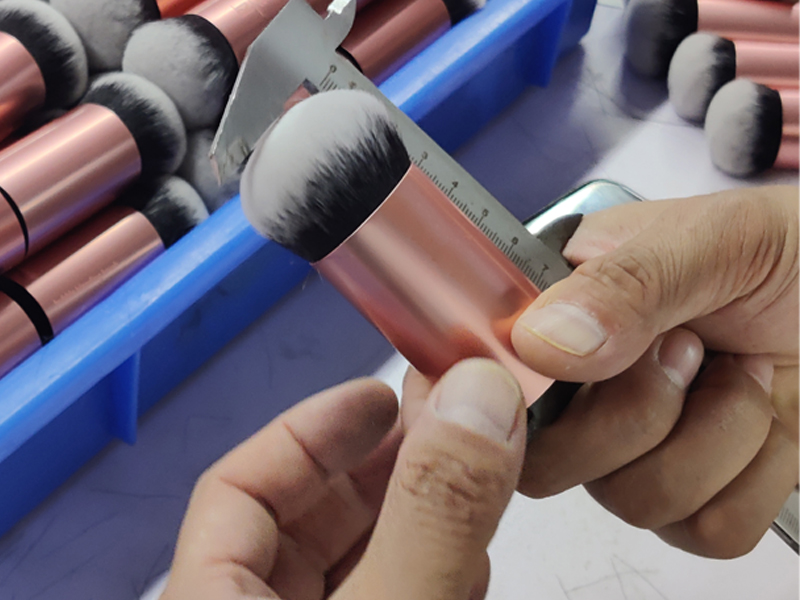
6. Accurate Measurement
We need to measure the dimensions of each makeup brush precisely. The length of the makeup brush affects the points of pressure during use, which is why some consumers complain that their makeup brushes are difficult to use, unable to easily draw lines or apply makeup evenly. Therefore, we take great care in making every single makeup brush.
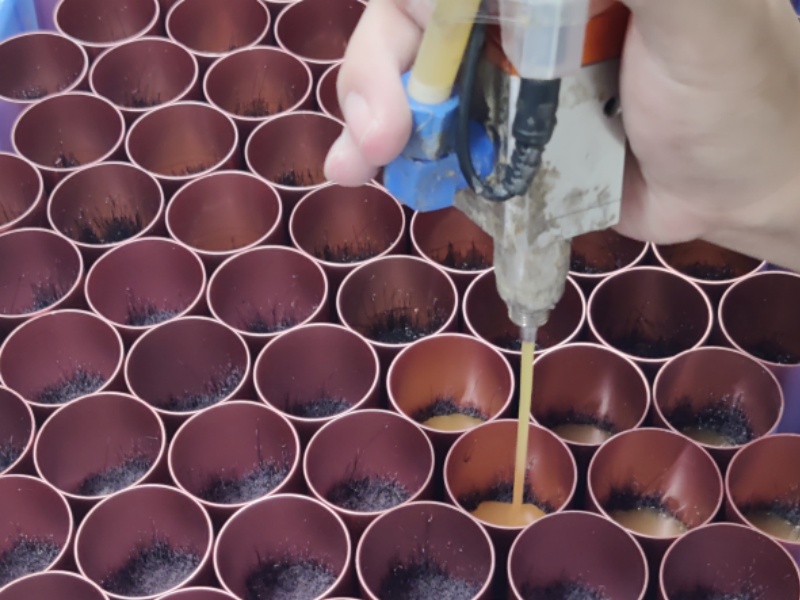
7. Glue dispensing
Glue application is a crucial step in the production of makeup brushes. Operators need to have rich experience to ensure the glue has the right concentration and amount. If the glue is too concentrated, it won't fully penetrate the bristles, leading to shedding. If the glue is too dilute, it can overflow, causing the bristles to clump together.
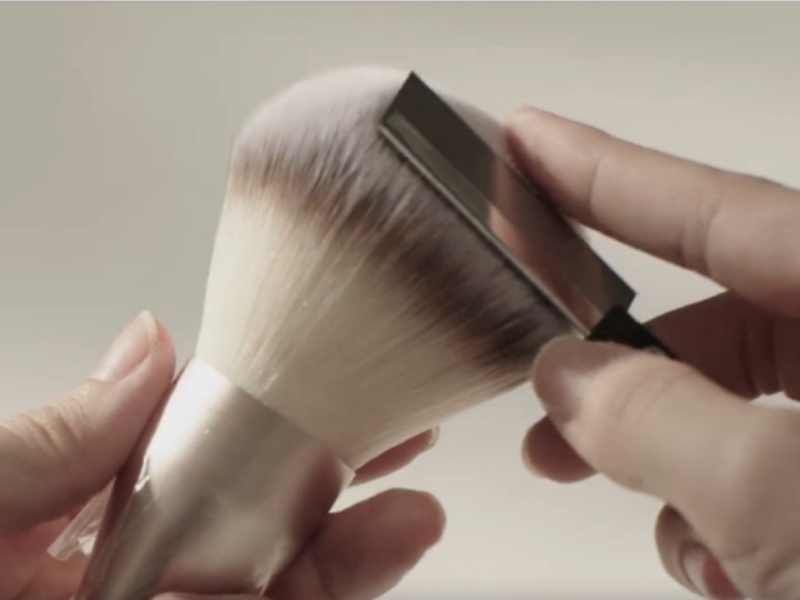
8. Trim the Brush hair
After the applied glue dries, the next step is to use specialized tools to trim off excess bristles, making the brush head look fuller and more attractive. This is similar to how humans need to trim their hair; everything is done to enhance the appearance.